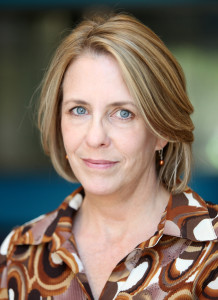Written by Rachel Dawn Hayes
Austin is growing and changing every day and our media landscape is growing and changing in tandem. Over the past year, new publications and programs have been introduced to our market, giving Austinites and Texans additional sources for building community.
Join WCA on Wednesday, July 15, for a conversation with the leaders of four of Austin’s newest media outlets. But first, read on for part one of a sneak peak at our July luncheon panelists’ takes on how Austin’s media has evolved over time and where it’s headed.
- Emily Donahue, News Director and Executive Producer, Texas Standard
- Julie Tereshchuk, Editor-in-Chief, Texas Lifestyle Magazine
- Kathy Blackwell, Editor, Austin Way
- Marika Flatt, Travel Editor & Associate Editor, Texas Lifestyle Magazine
Q: How did you come to be in Austin and in your current position?
Marika: I graduated from Texas A&M University in 1997 and moved to Austin. I went to a WCA happy hour, met a board member and she called me the next day about a job she thought I’d like. I got that job as a book publicist, worked at that firm 7 years, started my own firm and became a freelance travel writer in 2002. I wrote for several publications and then became the travel editor of what was Austin Lifestyle magazine. That magazine expanded into Texas Lifestyle Magazine a year ago.
Julie: Professional wordsmithing is my third career. Before moving to Austin from England 25 years ago, I was a project planner in the manufacturing industry then switched to a sales career with a Canadian software company. Writing and editing came about–full confession—with little planning and a definite leap-off-a-cliff moment, yet has brought me immense personal and professional satisfaction. In November 2014, I was thrilled to accept Marika Flatt’s offer to become Editor-in-Chief of Texas Lifestyle Magazine, a quarterly print and daily online publication.
Emily: I was living and working in L.A. in 2001, when KUT in Austin advertised they were starting a news department. The opportunity to start a news department was huge, so I applied, got it, moved, and we launched in 2002. Two years ago I began focusing on starting Texas Standard—the state’s first daily statewide radio news magazine.
Kathy: In 1999, I had been working at The Orlando Sentinel for almost six years and was ready for a change, so I sent my resume to The New York Times. They called and asked me to try out for a position on the copy desk, an intensive process that involved a thick packet of work in addition to a weeklong tryout on the desk. As an incentive, I bought a new CD to listen to while I worked. I chose a new one from Kelly Willis because I loved the title – What I Deserve. Then I received a Y2K-related joke email (remember those?) from a former colleague who had just moved to Austin to work at the American-Statesman. I asked my friend if she had ever heard of Kelly Willis. Her quick response: “If you love Kelly Willis, you’ll love Austin.” Two weeks later, I was on a plane to Austin to interview for a Statesman job. I stayed at the paper for 15 years. I was a features wire editor, a copy chief, and a schools reporter before becoming the features editor in 2004. In 2011, I was promoted to senior editor. In May of 2014, I was approached by a headhunter about the editor-in-chief post at Austin Way. I took the job and started in June 2015. We’ve published five issues so far; it’s been more rewarding than I ever dreamed possible.
Q: How has Austin’s media landscape changed in the past 5-10 years?
Marika: There are many more city magazines, all competing for the same ad dollars. And, with TV, some stations are now charging for segments, which is tough for those in PR.
Julie: Two major trends I see sound contradictory, namely convergence (I know. #overused) and proliferation. For example, our local daily newspaper is no longer just something that thumps onto the driveway every morning. That iteration of the Statesman is leaner, yet the digital Statesman has multiple channels. Go to statesman.com and you’ll see some of the same content in the printed paper alongside a plethora of links to additional content—much of it photos and images, and much of it from news sources other than the Statesman. And these days everyone can publish, be it blogs or books; or via traditional channels like the Statesman, which actively encourages the public to contribute. You’ll see the same convergence-proliferation at Austin’s NPR station, KUT, which is no longer just about getting you to turn on the radio. I consume much of my radio listening via podcasts, and often read news stories on KUT’s website rather than hearing them live on air.
Emily: How hasn’t it? The change from paper journalism to online and digital certainly defines it. The biggest shift I’ve seen is how journalists and media professionals now no longer work in a single media outlet such as TV or newspaper. Everybody works in everything.
Kathy: It has changed tremendously. We have a pretty sophisticated market, and honestly, readers just want quality content. On the digital front, people rely heavily on social media and follow the links that are most appealing, although there is certainly loyalty to specific sites and personalities. The print front has had challenges for sure, but that digital “a la carte” approach has helped in certain ways, with people reaching for publications that appeal to their many interests.
Check the WCA blog later this week for part two of this interview.
- Announcing Our 2016-2017 Board of Directors - May 31, 2016
- Freelance Corner: Making Impressions, Copyright FAQs and Nixing Procrastination - May 25, 2016
- Austin’s Best Kept Secrets: Swimming Holes - May 24, 2016





